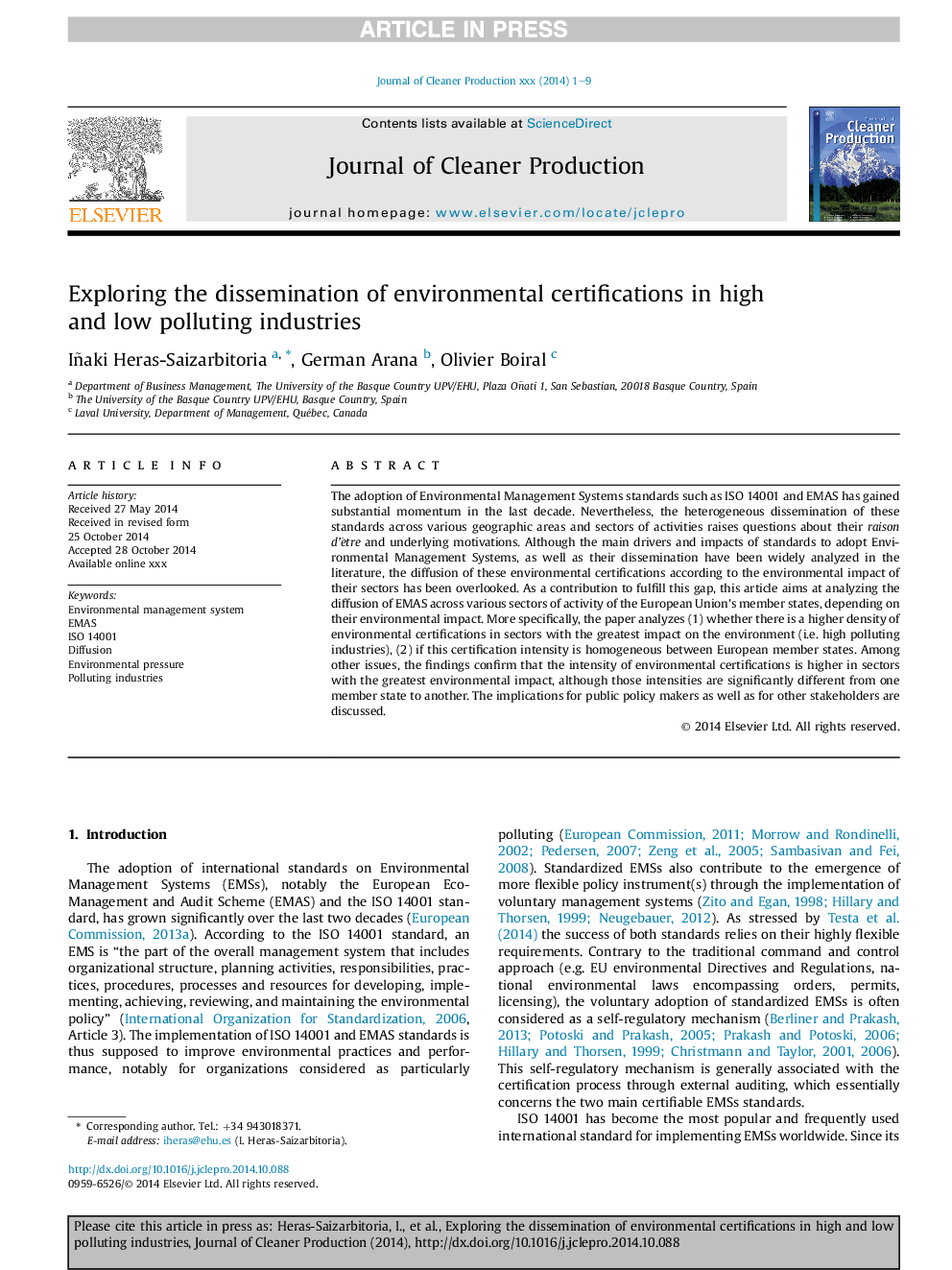| Article ID | Journal | Published Year | Pages | File Type |
|---|---|---|---|---|
| 8105047 | Journal of Cleaner Production | 2015 | 9 Pages |
Abstract
The adoption of Environmental Management Systems standards such as ISO 14001 and EMAS has gained substantial momentum in the last decade. Nevertheless, the heterogeneous dissemination of these standards across various geographic areas and sectors of activities raises questions about their raison d'être and underlying motivations. Although the main drivers and impacts of standards to adopt Environmental Management Systems, as well as their dissemination have been widely analyzed in the literature, the diffusion of these environmental certifications according to the environmental impact of their sectors has been overlooked. As a contribution to fulfill this gap, this article aims at analyzing the diffusion of EMAS across various sectors of activity of the European Union's member states, depending on their environmental impact. More specifically, the paper analyzes (1) whether there is a higher density of environmental certifications in sectors with the greatest impact on the environment (i.e. high polluting industries), (2) if this certification intensity is homogeneous between European member states. Among other issues, the findings confirm that the intensity of environmental certifications is higher in sectors with the greatest environmental impact, although those intensities are significantly different from one member state to another. The implications for public policy makers as well as for other stakeholders are discussed.
Keywords
Related Topics
Physical Sciences and Engineering
Energy
Renewable Energy, Sustainability and the Environment
Authors
Iñaki Heras-Saizarbitoria, German Arana, Olivier Boiral,
